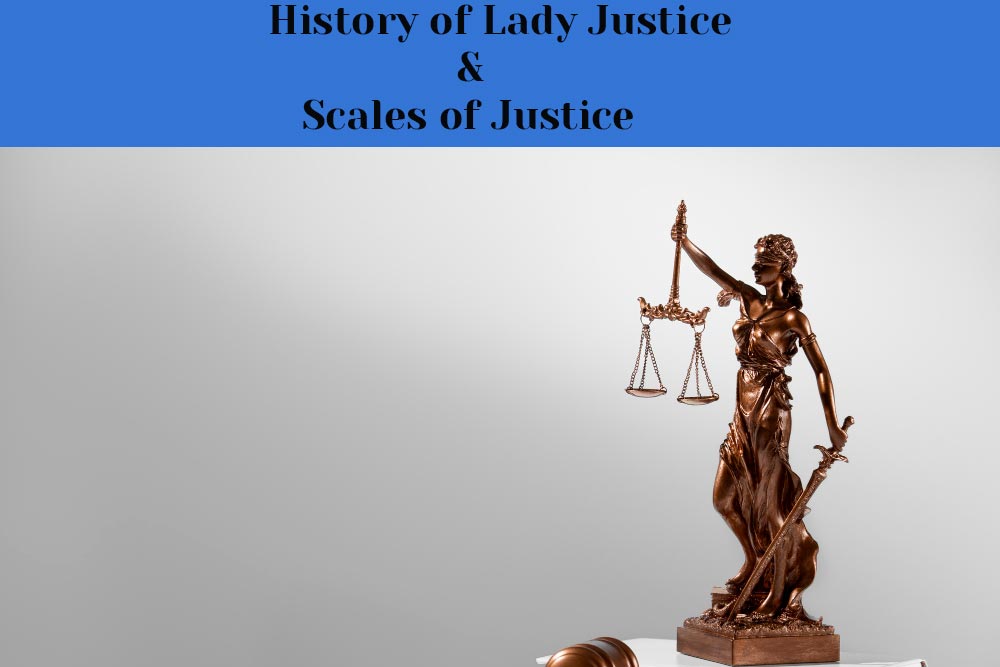The statue of lady justice holding the scales of justice is common if you have ever visited a courthouse or watched any law-related movies or series. In this blog, we are going to talk about the history of lady justice and the scales of justice.
History of Lady Justice
Lady Justice, also known as the personification of justice, is a figure that has long been associated with the legal system and the principles of fairness and impartiality. The origins of Lady Justice can be traced back to ancient civilizations, where she was often depicted as a goddess or a symbol of divine justice. In ancient Rome, for example, Lady Justice was represented as a goddess named Justitia, who was often depicted holding a pair of scales i.e. scales of justice in her hand and wearing a blindfold to symbolize her impartiality. In ancient Greek mythology, the goddess Themis was also associated with justice and the law. She was often depicted holding a pair of scales of justice and was seen as a symbol of fairness and impartiality. In Egypt, they considered Goddess Maat or Ma’at as the symbol of justice because Maat or Ma’at represented the Egyptian philosophies of balance, harmony, justice, law, and order.
The idea of Lady Justice as a symbol of fairness and impartiality in the legal system has continued to evolve over the centuries, and she has become a widely recognized and respected figure in many different legal systems around the world. Today, Lady Justice is often depicted as a blindfolded woman holding a pair of scales of justice and a double-edged sword, with the scales symbolizing the balance of justice and the sword representing the power of the law. This double edged-sword has both positive and negative connotations. The double-edged sword of Lady Justice i.e. Justitia denotes the ability to uphold truth, justice, and fairness while simultaneously having the power to punish those who disobey the laws of a lawful society. Despite her many different representations and interpretations, Lady Justice remains a powerful symbol of the principles of fairness and impartiality that are central to the rule of law.
The Meaning Behind The Lady of Justice Statue
The Lady of Justice statue is a representation of the personification of justice, who is often depicted as a blindfolded woman holding a pair of scales and a sword. The blindfold is meant to symbolize her impartiality and her ability to judge cases based solely on the facts and evidence presented, rather than being influenced by personal biases or prejudices. The scales represent the balance of justice, and the sword represents the power of the law. Together, these symbols represent the idea that justice should be fair, impartial, and based on the rule of law.
The Lady of Justice statue is often found in courthouses and other legal buildings, where it serves as a reminder of the principles of fairness and impartiality that are central to the legal system. It is also a symbol of the respect and dignity that the legal system affords to those who are accused or charged with crimes, and it serves as a reminder that all individuals are entitled to a fair and impartial trial. Overall, the Lady of Justice statue is a powerful symbol of the ideals of fairness and justice that are central to the rule of law.
What do the scales of justice represent?
The scales of justice is a symbol that represents the concept of fairness and impartiality in the legal system. It is often depicted as a pair of balanced scales, with one side representing the prosecution and the other side representing the defense. The idea behind the symbol is that the scales should be balanced, with both sides being given equal consideration and the outcome of a case being determined based on the facts and evidence presented. The scales of justice is often associated with the goddess of justice, who is often depicted holding a pair of scales in her hand. In many legal systems, the scales of justice is considered an important symbol of the principles of fairness and impartiality that are central to the rule of law. The scales of justice serve as a constant reminder of the ideals that the legal system is meant to uphold.
- What is Mens Rea and Actus Reus - February 13, 2024
- Case Summary of Anglo Norwegian Fisheries Case | United Kingdom V Norway - April 7, 2023
- What is a Solicitor? How to Become One - January 9, 2023

